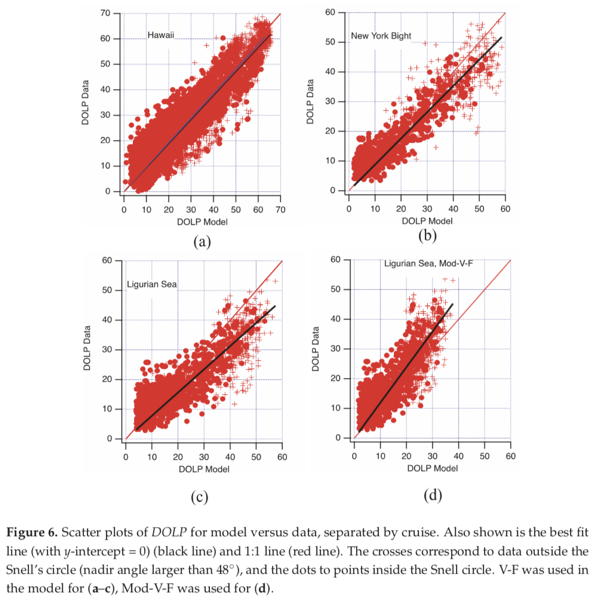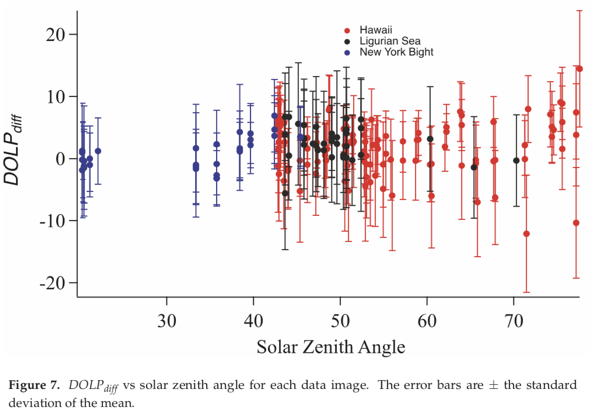A. C. R. Gleason, K. J. Voss, H. R. Gordon, M. S. Twardowski, J.-F. Berthon, 2018: Measuring and modeling the polarized upwelling radiance distribution in clear and coastal waters, Applied Sciences, 8 (12), 2683-2699, doi:10.3390/app8122683
Key points:
- On average, the difference in degree of upwelling linear polarization between model predictions and measured data was less than 5%, and in almost every case was within one standard deviation of zero.
- The model will provide sufficient accuracy for correcting residual polarization effects in ocean color instruments. However, more work must be done at improving the measurement accuracy of the instrumentation if the goal is to be able to use polarization effects to characterize (and differentiate with respect to) the physical properties of the suspended particles other than c/a.
Abstract: The upwelling spectral radiance distribution is polarized, and this polarization varies with the optical properties of the water body. Knowledge of the polarized, upwelling, bidirectional radiance distribution function (BRDF) is important for generating consistent, long-term data records for ocean color because the satellite sensors from which the data are derived are sensitive to polarization. In addition, various studies have indicated that measurement of the polarization of the radiance leaving the ocean can used to determine particle characteristics (Tonizzo et al., 2007; Ibrahim et al., 2016; Chami et al., 2001). Models for the unpolarized BRDF (Morel et al., 2002; Lee et al., 2011) have been validated (Voss et al., 2007; Gleason et al., 2012), but variations in the polarization of the upwelling radiance due to the sun angle, viewing geometry, dissolved material, and suspended particles have not been systematically documented. In this work, we simulated the upwelling radiance distribution using a Monte Carlo-based radiative transfer code and measured it using a set of fish-eye cameras with linear polarizing filters. The results of model-data comparisons from three field experiments in clear and turbid coastal conditions showed that the degree of linear polarization (DOLP) of the upwelling light field could be determined by the model with an absolute error of ±0.05 (or 5% when the DOLP was expressed in %). This agreement was achieved even with a fixed scattering Mueller matrix, but did require in situ measurements of the other inherent optical properties, e.g., scattering coefficient, absorption coefficient, etc. This underscores the difficulty that is likely to be encountered using the particle scattering Mueller matrix (as indicated through the remote measurement of the polarized radiance) to provide a signature relating to the properties of marine particles beyond the attenuation/absorption coefficient.
 ART GLEASON | Ocean Optics
ART GLEASON | Ocean Optics
